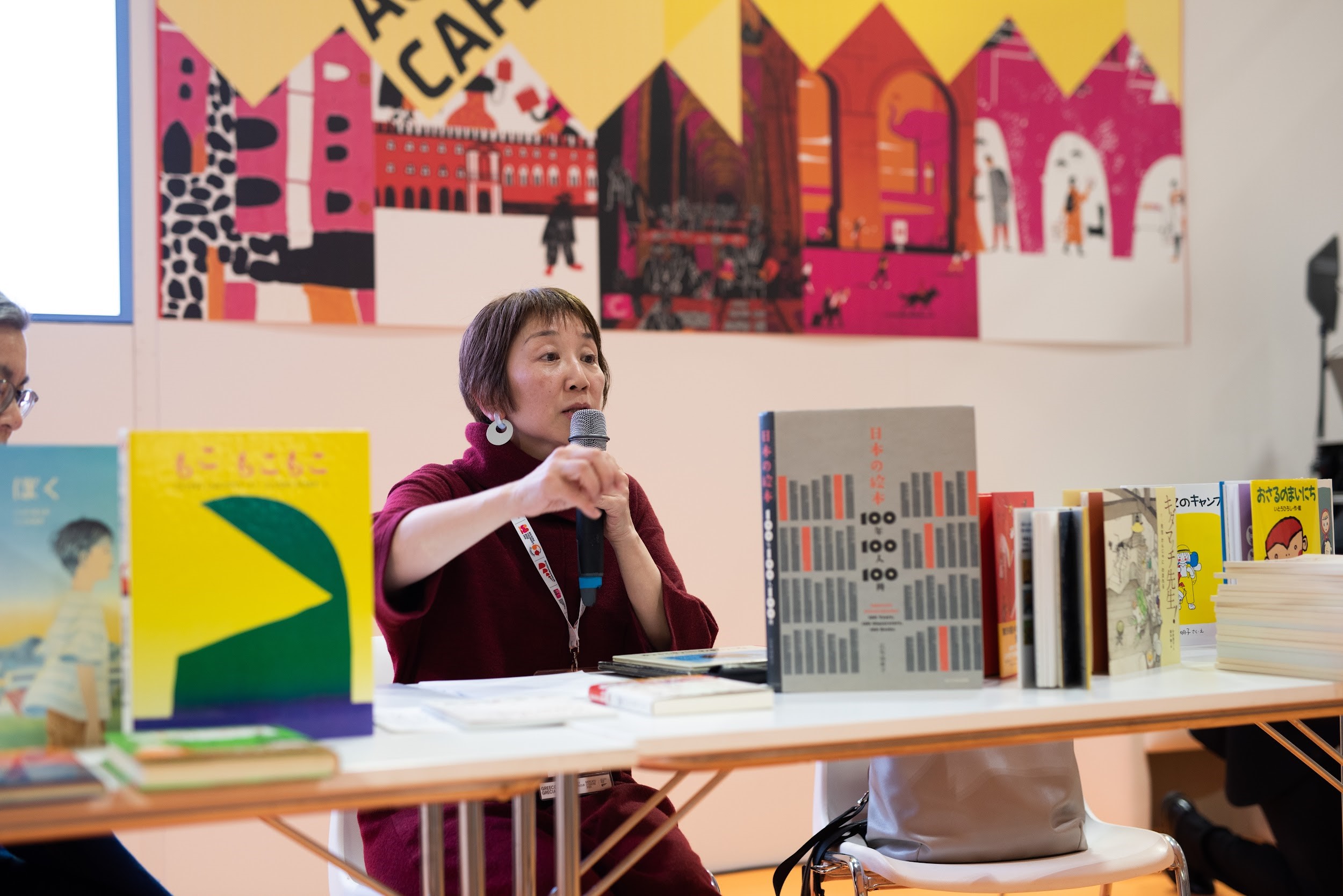
Get the latest updates in your inbox and sign up for more info!
Yukiko Hiromatsu shares the unique features of Japanese children’s books and the importance of reading for cultural understanding
Japanese children’s books are visually stunning, blending eye-catching illustrations with engaging stories, yet are not often translated or distributed outside of East Asia. Even prize-winning authors and illustrators might not become widely known or commercialized. In her panel, “Welcome to the World of Children’s Books in Japan,” Yukiko Hiromatsu shared some reasons why this might be, explored the details that make Japanese children’s books unique, and discussed the importance of reading Japanese children’s books to widen one’s perspective.
Because the population density of children’s book readers in Japan is high, Hiromatsu explained that Japanese publishers are less interested in publishing their books abroad. This is just one factor that many see as a barrier to the translation and distribution of these titles. Hiromatsu also explained that there are three different writing systems in Japan: hiragana, katakana, and kanji. While hiragana and katakana are more widely used, kanji presents an additional challenge as there are more characters, and many characters with multiple pronunciations. Text in Japanese children’s books can further be written horizontally or vertically. Until the 1960s, all children’s books had vertical text and a spine on the right, read from top to bottom and right to left, but this has since expanded, opening even more creative possibilities. As Hiromatsu describes, “It is a complicated element but also makes Japanese picture books very interesting.”
While these may be complicated elements to translate, these details add another layer of meaning to children’s books. Even the direction of the text has an influence on the story, as vertical writing makes the pacing of the book feel more relaxed while horizontal text makes for a more fast-paced reading experience. The options text and spine placement provide can lead to even more experimentation with form and content. For instance, Hiromatsu shared a picture book about a train with spine placement on the right, creating a parallel between the direction the book is read and the direction the real train travels.
There are also many unique forms that Japanese children’s books take. Onomatopoeic picture books are one example of this–stories that use onomatopoeic sounds to amuse readers. To translate these, Hiromatsu explained that more than language proficiency is required as onomatopoeia differ across cultures. Silent books are another interesting approach to storytelling: these are picture books with no text. Illustrations are key to Japanese children’s books, and this visual language can communicate more than written words. In fact, illustrations can even evoke a sense of sound. To illustrate this, Hiromatsu described the reading experience of a picture book with little text: “When read aloud, both children and adults become quiet as if listening to the illustrations.”
Clearly, the world of Japanese children’s books is vast, and there are many ways to create meaning through small details. Despite this, Hiromatsu noted that even award-winning books do not become commercialized or widely translated. To help promote Japanese children’s books across the world, she introduced the Worth Sharing initiative led by the Japan Foundation, which recommends Japanese books for translation. In collaboration with the Japanese Board on Books for Young People, another 59 children’s books were added to the “Lifelong Favorites” list, which recommends popular folktales, classic bestsellers that are still popular today, and contemporary titles that are expected to become longtime bestsellers.
“Children’s books are doors that connect different countries,” Hiromatsu stated, emphasizing the importance of reading to deepen cultural understanding. The “Lifelong Favorites” list, aiming to bring these stories to an even broader audience, is an important initiative to widen the perspectives of readers and promote the magic of Japanese children’s books around the world.
For those interested in learning more about Japanese children’s books, visit the Worth Sharing website to view the full “Lifelong Favorites” list.